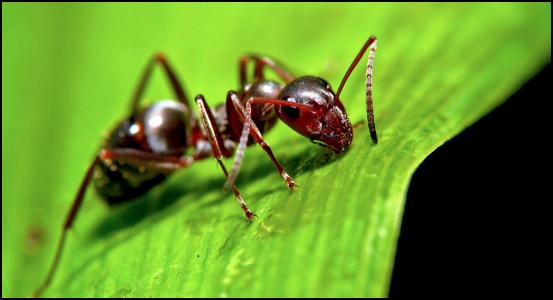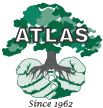Atlas Pest Control, Inc.
Request Service
Call 925-521-9911
Complete Outdoor Landscape Pest Control Services
License 39316
Name:
Email:
Phone:
Message:
Typically, trees and plants used in landscaping are not native to the area. By changing their normal soil conditions, watering patterns, temperature ranges, etc., they become stressed, leaving them unable to support their own defenses against attacking pests, fungus, and bacteria. Trees and plants will show signs like oozing sap; wet spots; leaf drop, dieback, or turning brown or yellow; even mushrooms, all of which can be indicative of problems that should be looked at by professionals.
1. My trees look fine (or, “I don’t have any ant/spider/pest problems right now”), why should I spray? Preventive spraying or systemic injections provide continuing protection to keep pests, fungus, & disease from becoming a problem in the future.
2. How is spraying around the outside of my house going to help with a pest invasion inside?
Regular pest control sprays lay down a chemical barrier that keeps nuisance-pests away from your home and out in the landscape where they belong.
3. Why do my trees (shrubs) need fertilizing/soil conditioner/mycorrhyzae? To provide needed nutrients and soil amendments helps minimize the stresses associated with living in a non-native environment (see intro, above).
4. Why will treating my lawn for grubs help with my mole problem? Moles eat mainly earthworms and lawn-grubs, which they consider a special treat. Eliminating the grubs eliminates the attraction for the moles.
5. Why should I keep respraying my landscape/trees/shrubs? Won’t one spray “cure” the problem? All chemicals lose their effectiveness eventually due to heat, UV rays, or just age. Repeat treatments keep your landscape protected continuously.
6. I had my trees sprayed a week ago, and they look worse now than they did before the service – why? Effects of damage done prior to treatment may continue for several weeks after service. Damaged leaves or needles will eventually drop and be replaced by healthy new growth.
7. What makes today’s products for mole infestations better than the ones available a few years ago? A three-year research project designed to identify mole feeding habits and preferences led to the development of a revolutionary mole-bait just released on the market in the fall of 2004. Previous baits weren’t based on moles’ unique metabolism, and so were only minimally effective.
8. Trees in the forest look just fine without any maintenance whatsoever – why isn’t my landscape low-maintenance too? Non-native species, wrong environment, too close to paved areas, not enough nutrients in the soil, planting too close to structures or each other, compacted soil in the root area, not enough water – any or all of the above.
9. How long do I have to keep my pets indoors? While the technician is spraying, and during the time (varies with temperature) it takes to dry. For non-spray services, as soon as the technician leaves.
10. Is this product harmful to the environment? All of our products are registered with the Environmental Protection Agency and approved for use by the State of California Department of Pesticides. Our technicians undergo rigorous training to ensure they use approved application methods, all to assure a minimum negative impact to the environment. Refer to the Department of Pesticide Regulation web site for specific chemical information.
11. How long will this be effective and control my problem? Most products offer residual control 45-60 days post-application. Heat tends to accelerate chemical breakdown, not rain.
12. What happens if it rains? Spray products are like paint: while wet, it can be washed off, but once dry it can’t be washed away with water (rain).
13. Can a pest or fungal problem be controlled without spraying? Many treatments are available without being sprayed, either by systemic injection into the soil or directly into the tree or shrub.
14. Do I need to water my Monterey pines? YES!! Summer drought-like conditions cause distress to these surface-rooted trees. They need soaking at the canopy drip-line so water penetrates 12-18 inches below the soil surface.
15. How often should I fertilize? For most trees and shrubs, a minimum of once a year during, non-growing (dormant) season . Greater benefit can be derived from fertilizing with season-specific formulas, two to four times a year.
16. How often should I spray? As often as necessary to achieve the level of control you desire. For pest and fungus problems of trees and shrubs, it varies with the species and the season. For ant and spider infestations around the house, bi-monthly or quarterly is recommended.
17. Is it better to be on an auto-schedule? For customers with full calendars, automatic scheduling is a benefit, as we do the remembering. Before service, a call is made, leaving the date and service to be completed. Should it not be convenient, just let us know, as work is always done at the customer’s convenience.
18. Do you guarantee your work? Exterior pest control*: 30 days; Rodent control: 20 days in the same location; tree & shrub pest and/or fungus treatments: varies by type; fruit/nut/seed control: no guarantee on the amount of reduction (*flea-control and some epidemic infestations require multiple treatments within a short time, and are not included).
19. Can I have someone look at my trees and recommend treatment? Between both divisions of our company, we have five certified arborists on staff that can evaluate your trees and recommend a course of treatment.
20. Do you (know) any new ways of controlling moles or gophers? YES!! A fumigant is available (only to qualified licensed applicators) that is highly effective for the elimination of ground burrowing rodents; and in October 2004 a revolutionary product became available in California specifically to eradicate moles.
21. What is the best time of year to control lawn grubs? Spring and late summer, if you live in the Bay Area.
22. How can I make a payment? We accept Visa, MasterCard, Discover, & American Express credit cards, cash, checks, and money orders. Some customers prefer to pre-pay for services to be rendered, & that is OK, too.
23. What is sudden oak death (SOD)? Sudden oak death is a high level contagion often fatal to Coast live oak, Shreve’s oak, Black oak, Canyon oak, and Tanoak. The infection is spread by Ambrosia beetles(flying in spring & late summer), soil and/or root contacts and plant carriers like California Bay Laurel, rhododendrons. For complete up to date information go to The California Oak Mortality Task Force.
24. What signs of pest or fungal damage should I be concerned and have checked by a professional? Beetles and borers cause damage quickly. Trees with oozing sap, dark wet stains, holes or saw dust at base - GET HELP. Limb loss, sudden leaf drop, canopy dies or section yellows and dies, browning or rust, mushrooms growing at base of a tree - GET HELP.
Frequently Asked Questions
Serving Contra Costa, Alameda, Santa Clara, San Mateo, Solano, San Francisco, Marin and Napa Counties, including the following cities of Concord, Martinez, Pleasant Hill, Pacheco, Walnut Creek, Lafayette, Alamo, San Ramon, Clayton, Danville, San Jose, San Francisco, Oakland, Pleasant Hill, Pittsburg, Orinda and Moraga





